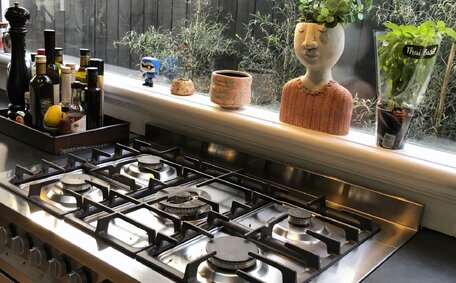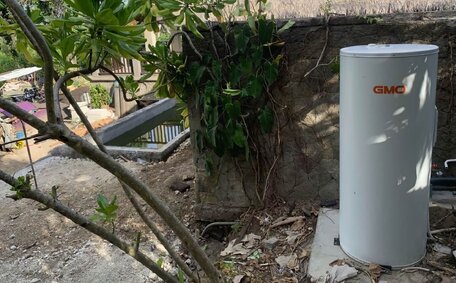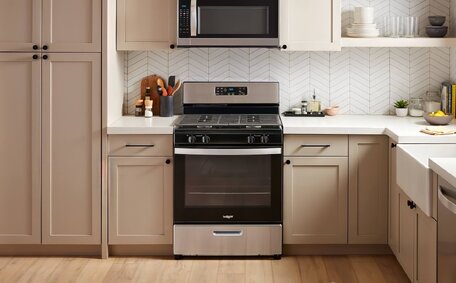
Financial Benefits of Natural Gas
Natural gas offers many financial perks over other energy sources. It burns cleaner and costs less than alternatives, helping lower monthly bills.
Read MoreTrenchless pipe lining is a method for repairing existing pipes without the need to dig up yards or flooring. It involves inserting an epoxy resin-soaked liner into the existing pipe, which then cures to develop a seamless, joint-free 'pipe within a pipe’.
For Balmain property owners, pipe relining represents a modern alternative to traditional replacement techniques, enabling repairs from within the pipe and causing minimal disturbance.
The benefits pipe relining offers are numerous and include:
Timely identification of when pipe relining is necessary can prevent considerable future damage as pipes age.
Leakage is a primary indicator that pipes may require relining, with early detection being crucial to limiting water damage.
Small drips or damp patches on walls and ceilings often hint at cracks or holes in concealed pipes.
Another red flag for your pipe repair is discoloured water flowing from taps or drains, which could damage your fixtures. Rusty, brown, or grey water suggests corroding pipes are flaking internally. Particles can break free over time and clog fixtures.
Noticeably reduced water pressure is another warning sign. As pipes narrow from corrosion or accumulations like mineral deposits, water struggles to pass through easily. Identifying flow issues promptly can prevent frustrating drops in water pressure.
Unchecked damage, such as cracks and blockages, can worsen over time, leading to breakdowns like severe leaks or broken pipes. Intruding tree roots are also a concern, as they can infiltrate and worsen cracks in underground pipework.
However, trenchless pipe relining can repair these issues without the need for digging.
Addressing the first signs of pipe issues promptly can significantly enhance the longevity of your plumbing.
Specialists begin the relining process with a thorough examination using high-definition drain cameras to determine the extent of pipe damage, identifying issues invisible from the outside.
Drain camera footage unveils problem areas within the pipes, such as cracks, root intrusions, corrosion, and blockages. It enables assessment of the entire pipe interior, guaranteeing all your plumbing issues are identified and that the custom-fitted liners employed in relining will rectify every damage.
In many cases, after diagnosis with cameras, pipes undergo cleaning and preparation. Built-up gunk, mineral deposits, roots, and protrusions are cleared out using high-pressure water jetting. Clearing out gunk is essential for smoothing the path, facilitating the installation of liners.
Additional pre-relining steps may involve pipe patching in areas of isolated leaks or holes. These interventions prevent further deterioration and prime surfaces for bonding with the liner.
Thorough inspection and preparation are essential for a successful, long-lasting relining, which our team ensures by addressing all key issues during drain repair prior to installing a new epoxy barrier, thereby avoiding the need for excavation.
There are two main techniques used in pipe relining - Cured-in-Place Pipe (CIPP) lining and pipe bursting. Below is a clear summary of the various pipe relining methods:
This is what pipe relining involves: the predominant approach, employed to mend pipes afflicted with damage manifesting as cracks leaks and obstructions. This method inserts a felt tube coated with epoxy resin into the damaged pipe.
The pipe repair method used in the relining process, in contrast to traditional pipe replacement operations, encompasses:
A smooth, jointless, and corrosion-resistant lining is the outcome, restoring both pipe integrity and functionality. Over 93% of property owners report effective plumbing resolution with CIPP.
When pipes are beyond repair, pipe bursting replaces them entirely in a trenchless procedure, shattering the damaged pipe and installing a new one simultaneously.
Key steps include:
This technique is particularly beneficial for severely damaged pipes that cannot be sealed from within, allowing for upsizing to increase capacity.
Our team evaluates each sewer scenario to recommend the most suitable trenchless repair method, taking into account factors like pipe composition and extent of damage.
Cured-in-place pipe (CIPP) lining is one of the most popular and effective methods for a damaged drain. It works by inserting a resin-saturated felt tube into the damaged pipe then deploying our pipe relining solutions to cure it, usually with hot water or steam, to harden the resin into a smooth, jointless liner.
Key benefits of does pipe relining include:
As a densely populated urban area, CIPP is highly useful for Balmain residents in both home and business settings wanting to avoid major excavation around your property. By inserting a liner into pipes from the inside, CIPP allows for comprehensive repairs with much less disruption.
The pull-in-place method is an alternative trenchless technique for repairing deteriorated pipes. As the name suggests, it involves pulling a resin-coated liner into the damaged pipe and then curing it to form a hardened, watertight seal.
This method differs from CIPP relining in a few key ways:
Preferable conditions for pull-in-place relining include scenarios where:
The materials used in this relining process include:
The pull-in-place method, executed with precision by our plumbers, can effectively rejuvenate severely damaged pipes for over 50 years.
Choosing a pipe relining contractor requires selecting an experienced and trustworthy company. Verify their licensing, insurance, industry certifications, and affiliations such as with the National Trenchless Association.
Ensure the contractor has extensive experience with different pipe relining methods, can provide evidence of past relining jobs, and is proficient in techniques such as advanced CIPP processes.
Reputable contractors, as professionals can, will provide past client testimonials and references to showcase reliability. They should inspect the full length of piping with drain cameras before quoting, openly explain the relining process, and stand by warranties on completed projects.
At Balmain Plumbing, we rectify problems such as broken pipes with our pipe relining services, backed by over a decade’s experience in Balmain and Sydney. We are fully accredited and committed to comprehensive inspections and repairs tailored to each customer’s needs. You can contact our experienced team today concerning your specific relining needs.
Understanding the pipe relining process from start to finish is beneficial when using our comprehensive service.
Our team arrives equipped with essentials like resin liners and pipe cameras, ensuring safety and efficiency by cordoning off the work area. The relining typically takes 2-3 hours, depending on the pipe’s dimensions.
You can expect moderately loud machinery noise intermittently from boiler units and drain jetters. We take care to minimise disruption to occupants by working quickly. Some vibration or shaking may transmit through walls as liners are fed into pipes.
With the epoxy barrier in place, the relined pipes will be stable for decades, offering improved water flow and pressure. Our work comes with long-term defect warranties for your reassurance.
After relining, your pipes become less prone to damage from fats or chemicals, although it’s still advisable to avoid their disposal down the drain. The pipes will require no special maintenance, but if any plumbing issues recur, do not hesitate to reach out to our specialists.
Cost considerations are paramount when comparing pipe relining and replacement, with relining often proving to be significantly more economical than traditional excavation.
Average costs for a 10 metre section are:
Relining circumvents additional costs like landscape restoration, flooring, and furnishings, which are incurred with traditional pipe replacement.
Epoxy-lined pipes are anticipated to last over 50 years without additional repairs, while new piping may require attention after 15-20 years. Relining thus offers superior long-term value by avoiding repeated excavations.
Our team of plumbing experts provides precise, personalised estimates for sewer pipe relining. Experience the affordability of long-term plumbing restoration with our trenchless relining services.
Natural gas offers many financial perks over other energy sources. It burns cleaner and costs less than alternatives, helping lower monthly bills.
Read MoreChoosing the correct hot water system size involves considering factors like number of household members, number of bathrooms, peak usage times and daily hot water needs per person. Our guide helps determine the right system capacity.
Read MoreHaving trouble with your gas water heater not heating properly? The pilot light may have gone out. Follow our clear guide on relighting your gas water heater’s pilot light in 6 easy steps. Or call the friendly experts at Balmain Plumbing if you need assistance relighting your pilot.
Read MoreBalmain, 2041 NSW
We will call back as soon as possible.




